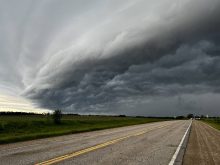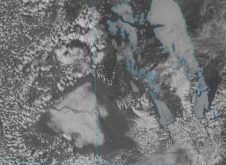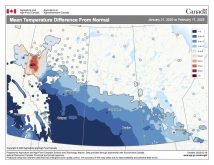Ihave received several emails the past few months regarding the number of heavy rainfall events and associated flooding that has occurred around the world lately. I started poking around a little bit to see what I could find on the subject, and as usual, I came across some good research. While these studies were done in the United States, a lot of the data used is global, taken from reports of flooding coming in from all over the world, so I feel these studies can give insight as to what might be happening globally.
Read Also

June brings drought relief to western Prairies
Farmers on the Canadian Prairies saw more rain in June than they did earlier in the 2025 growing season
The first study I came across is from Groisman et al. (2004) who found that in the U. S. during the 20th century, there was a 16 per cent increase in cold-season (October-April) “heavy” precipitation events (greater than 50 mm in one day), a 25 per cent increase in “very heavy” precipitation events (greater than 100 mm in one day), and a 36 per cent rise in “extreme” precipitation events or what is known as a one-in- 1,000-year event.
Interestingly, a sharp rise in extreme precipitation is what is predicted by global warming models in the scientific literature. According to the 2009 U. S. Climate Impact Report from the U. S. Global Change Research Program, “the amount of rain falling in the heaviest downpours has increased approximately 20 per cent on average in the past century, and this trend is very likely to continue.”
According to the report, most of this increase came since 1970, due to the approximate 1.8 C increase in U. S. average temperature since 1970. That 1.8 C increase in temperature means that, on average, there is four per cent more moisture in the atmosphere.
Ac cording to the 2007 Intergovernmental Panel on Climate Change (IPCC) report, water vapour in the global atmosphere has increased by about five per cent over the 20th century, and four per cent since 1970. Satellite measurements according to Trenberth et al., 2005 have shown a 1.3 per cent per decade increase in water vapour over the global oceans since 1988.
VAPOUR BOOSTS STORMS
In an interview with Kevin Trenberth of the National Center of Atmospheric Research, who is considered the world’s leading expert on water vapour in the atmosphere, the subject of heavy precipitation events and global warming was brought up. In that interview, Trenberth comments that “since the 1970s, on average, there’s about a four per cent increase in water vapour over the Atlantic Ocean, and when that gets caught into a storm, it invigorates the storm so the storm itself changes, and that can easily double the influence of that water vapour and so you can get up to an eight per cent increase, straight from the amount of water vapour that’s sort of hanging around in the atmosphere.”
Trenberth indicates that many storms reach quite far out to pull in moisture and that many are pulling in moisture from the subtropical Atlantic and the Gulf of Mexico. The sea temperatures here are at very high levels, the highest on record at the moment, which means they can hold more moisture. This moisture may travel about 2,000 miles, until it falls as heavy rains in the U. S.
What does this mean for us? While we do get a fair bit of our moisture from the Pacific Ocean, we do see more than our fair share of moisture flowing in from the Gulf of Mexico, especially when we see big storms. Any increase in overall atmospheric moisture can and will often mean that storm systems will be stronger (not necessarily bigger) and a stronger storm system will usually result in more precipitation. What it doesn’t mean is that we will be consistently wetter. We will still see wet periods like the last few months and we will still have dry periods. What it does mean is that there is a good chance that our wet periods will be wetter, as more moisture is available in the atmosphere.
Can we blame the increase in record flooding across the world this year to a warmer atmosphere and the resultant increase in atmospheric moisture?
Well, maybe yes and maybe no, but certainly not definitely. There have been record rainfalls and floods in the past and even without an increase in atmospheric moisture “weather conditions” can come together occasionally that will result in these record events.
Personally though, I think we will continue to see more of these events over the coming years, especially if we continue to see the global climate become warmer.



















